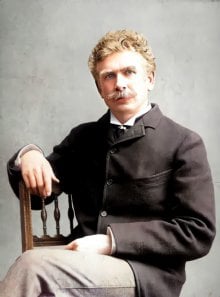Overview
Ambrose Bierce’s 1893 collection Can Such Things Be? gathers a wide range of his uncanny, sardonic, and often brutal tales into a single compendium of hauntings, disappearances, fatal illusions, and metaphysical pranks played on the living. Drawing on his experience as a journalist and satirist, Bierce fashions supernatural fiction that is terse, unsentimental, and unnervingly plausible. The title doubles as a dare and a method: the book turns skepticism and belief into a narrative engine, forcing characters and readers to wrestle with events that feel documented yet remain inexplicable.
Scope and Structure
The collection balances polished short stories with brief vignettes, mock-documentary fragments, and reports that mimic coroner’s inquests, depositions, and newspaper items. This mosaic form lets Bierce vary tone and pace while sustaining an atmosphere of dread. Many pieces are framed by official proceedings or first-person testimonies that court credibility even as they destabilize it. The settings range from California mining camps and desolate Western townships to genteel parlors and nocturnal byways, with occasional returns to battlefields and their afterlife in memory. Grouped implicitly by recurring situations, haunted houses, mysterious vanishings, revenants, and uncanny agencies, the book feels like a cabinet of cases more than a continuous chronicle.
Themes and Motifs
Perception is treacherous throughout. Characters misread signs, confuse dream with waking, or find their rational categories eroded by phenomena that adapt to skepticism. Death is abrupt, often intimate, and refuses to stay put; corpses return, identities blur, and the boundary between living and dead becomes porous. Bierce delights in the malign wit of things: a house, a field, a vine, or a machine seems to acquire will, as if the material world peers back. Fatalism threads the stories; destiny springs not from cosmic justice but from accident, fear, and the ironies of self-knowledge arriving too late. The social world is no refuge. Officialdom appears pompous and inept, the sensational press both credulous and corrosive, while frontier codes of honor mask cruelty and cowardice.
Techniques and Tone
Bierce’s style is astringent and exact, with journalist’s economy and a satirist’s bite. He favors deadpan delivery, clinical detail, and sudden reversals that withhold comforting explanation. Documentary devices, diaries, testimony, marginal notes, lend a chill of authenticity, even as contradictions and omissions reveal how fragile evidence can be. He fuses folklore with the modern language of science and law, allowing the uncanny to infiltrate the very instruments meant to dispel it. The effect is not baroque terror but lucid estrangement: scenes are brightly lit, sentences clean, and horror advances with the calm of a ledger.
Notable Tales
Across the volume, several stories crystallize his method. In “The Death of Halpin Frayser,” a dream-haunted wanderer meets a revenant bound to him by blood and guilt, the narrative folding into a mother-son nightmare that feels both mythic and forensic. “The Damned Thing” assembles witness testimony and a dead man’s notes to posit a predator invisible because it lies outside human perception, a case file that opens onto cosmic indifference. “The Middle Toe of the Right Foot” turns a duel into a reckoning inside a reputedly haunted house, where bravado meets psychological terror with savage irony. “Moxon’s Master” examines the uncanny life of a chess-playing automaton and the fatal consequences of attributing mind to mechanism. “The Man and the Snake” shows a fatal panic inspired by what may be only a stuffed serpent, an anatomy of fear more lethal than any venom. Elsewhere, brief pieces on disappearances and haunted dwellings compress mystery into a paragraph, as if the world’s strangest events were routine notices on the back page.
Legacy
Can Such Things Be? codifies Bierce’s singular contribution to American weird fiction: a fusion of reportage and revenant, skepticism and shudder. By treating the supernatural as a problem of evidence and perception rather than an occasion for ornament, he anticipates later documentary horror and the impersonal dread of modernity. The book’s cool poise, mordant humor, and pitiless endings continue to unsettle, inviting the same question its title poses and never resolves.
Can Such Things Be?
A collection of 24 supernatural and psychological horror stories, combining elements of the Gothic tradition with Bierce's own personal experiences in the Civil War.
Author: Ambrose Bierce
 Ambrose Bierce, an influential American author and journalist known for his wit, Civil War stories, and The Devil's Dictionary.
Ambrose Bierce, an influential American author and journalist known for his wit, Civil War stories, and The Devil's Dictionary.
More about Ambrose Bierce
 Ambrose Bierce, an influential American author and journalist known for his wit, Civil War stories, and The Devil's Dictionary.
Ambrose Bierce, an influential American author and journalist known for his wit, Civil War stories, and The Devil's Dictionary.